Table of contents
- Aogochi AddSound Wireless helmet sound system
- Docks with an adapter
- Speed-dependent volume control
- opinion poll
- Conclusion

Aogochi
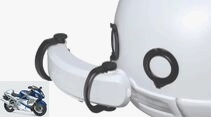



8th pictures
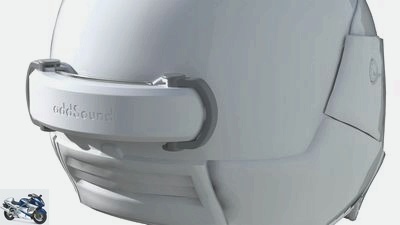
Aogochi
1/8
A new helmet speaker system comes from Japan.

Aogochi
2/8
The AddSound from Aogochi uses the helmet shell as a sound body.
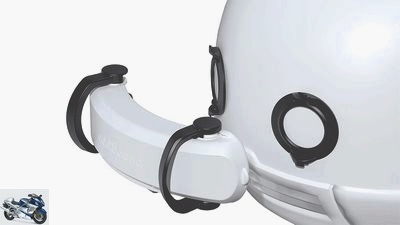
Aogochi
3/8
The system docks to the helmet using two glued adapter rings.
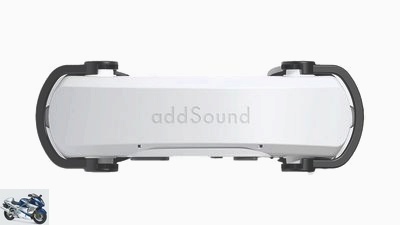
Aogochi
4/8
The system is 18 centimeters wide and weighs 198 grams.
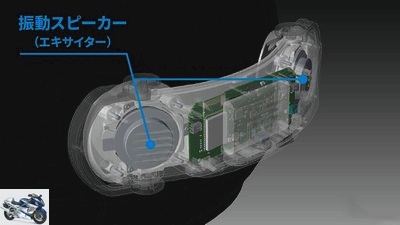
Aogochi
5/8
Two pathogens make the helmet shell sound.

Aogochi
6/8
A microphone can also be connected as an option.
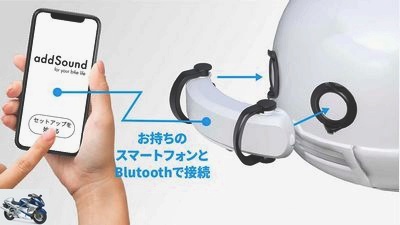
Aogochi
7/8
AddSound offers a suitable app for control.
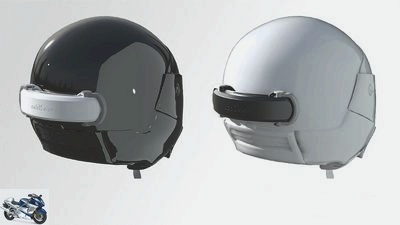
Aogochi
8/8
In Japan the system is available for the equivalent of 230 euros.
accesories
Navis, communication, apps
Aogochi AddSound: Wireless helmet sound system
Aogochi AddSound
Wireless helmet sound system
With the AddSound from Aogochi, a new wireless helmet sound system comes from Japan that uses the helmet shell as a sound body.
Uli Baumann
March 8th, 2021
Does the helmet shell sound familiar to you? Yes, that also relies on the same functional principle Headwave TAG system. The AddSound system differs from its German counterpart in terms of details and design.
Docks with an adapter
The AddSound, which is waterproof according to the IPX5 standard, is attached to the helmet with an adapter system. To do this, two adapter rings must be glued to the helmet shell. The actual sound system is then latched into this. The docking takes place via snap locks, as they are also known from suction cup systems. The AddSound system, which weighs just under 200 grams and measures 62 x 180 x 52 millimeters, should be securely attached to the helmet. In the event of an accident, however, it should just as easily be detached from it. The actual sound depends heavily on the mounting position and the properties of the helmet shell.
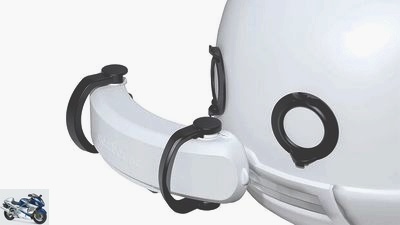
Aogochi
The music, or the communication for a navigation system, comes via a Bluetooth connection. AddSound offers an app with an integrated equalizer for Android and iOS specially tailored to the helmet system. Since AddSound relies on two stimulator elements, stereo sound is offered. An integrated microphone socket also allows a microphone to be connected. The integrated battery is recharged via a micro USB type B connection. Two hours are given as charging time.
Speed-dependent volume control
How long the 1,000 mAh battery lasts when driving depends on the speed driven, because the AddSound system is speed-dependent. This means that an integrated acceleration sensor detects changes in speed and adjusts the volume accordingly. The operating time is between 5 and 18 hours. The entire system is switched on or off by a button. During operation, it can be put into sleep mode or woken up again by simply tapping on the helmet shell. If the helmet is removed, the system recognizes this and switches to sleep mode to save power.
The AddSound system is available in black and white. The right microphone is under development. A software extension with voice control and group chat function is also to come. AddSound is currently only marketed in Japan. The price is the equivalent of around 230 euros.
opinion poll
What do you mainly use your communication system for??
Voted 1393 times
Communication with other bikers or passengers.
listen to music.
Make a phone call.
Conclusion
A sound system that uses the helmet shell as a sound body is not new. The Japan system has a few nice features such as the speed-dependent volume control, the muting via the helmet shell or the practical helmet connection.
Related articles
-
Sena Outstar: Jet helmet with communication system
Sena clothing Helmets Sena Outstar: Jet helmet with communication system Sena Outstar Jet helmet with communication system With the Outstar, Sena has…
-
Sena Savage smart jet helmet communication system
Sena clothing Helmets Sena Savage smart jet helmet communication system Sena Savage New smart open face helmet Sena has presented a new smart open face…
-
Sena Econo: Open face helmet with communication system
Sena 4th pictures Sena 1/4 With the Sena Econo, Sena offers an inexpensive jet helmet with an integrated communication system. Sena 2/4 With a range of…
-
Sena Momentum Evo: Smart helmet with communication system
Sena 4th pictures Sena 1/4 With the new Momentum Evo, Sena offers a full-face helmet that looks sleek and is equipped with a complete communication…
-
Schuberth M1 Pro in a practical test: Jet helmet with communication system
Schuberth 13th pictures Schuberth 1/13 Schuberth has revised the M1 jet helmet in the areas of ventilation, interior fittings and communication system….
-
Tried Cardo Packtalk Black: Classy appearance, powerful sound
Uli Baumann 14th pictures Uli Baumann 1/14 Cardo is upgrading its Packtalk range with the new top model Packtalk Black. Uli Baumann 2/14 MOTORRAD was…
-
Sena HD speakers: sound upgrade for the helmet
Sena accesories Navis, communication, apps Sena HD speakers: sound upgrade for the helmet Sena HD speakers Sound upgrade for the helmet Sena offers an…
-
Tried Headwave DAY 2: simple music enjoyment under the helmet
Uli Baumann 19th pictures Uli Baumann 1/19 Headwave has redesigned its TAG helmet speaker. MOTORRAD tried DAY 2 on various helmets and different…
-
Sena S20S Evo tried out: Bluetooth headset for the helmet
Nicolas Becker accesories Navis, communication, apps Sena S20S Evo tried out: Bluetooth headset for the helmet Tried the Sena S20S Evo Bluetooth headset…
-
Nexx helmet innovations: adventure helmet in carbon, new jet helmet
Nexx 8th pictures Nexx 1/8 Nexx is also bringing the X.Wed 2 adventure helmet in a carbon version for 2021. Nexx 2/8 The carbon helmet shell reduces the…